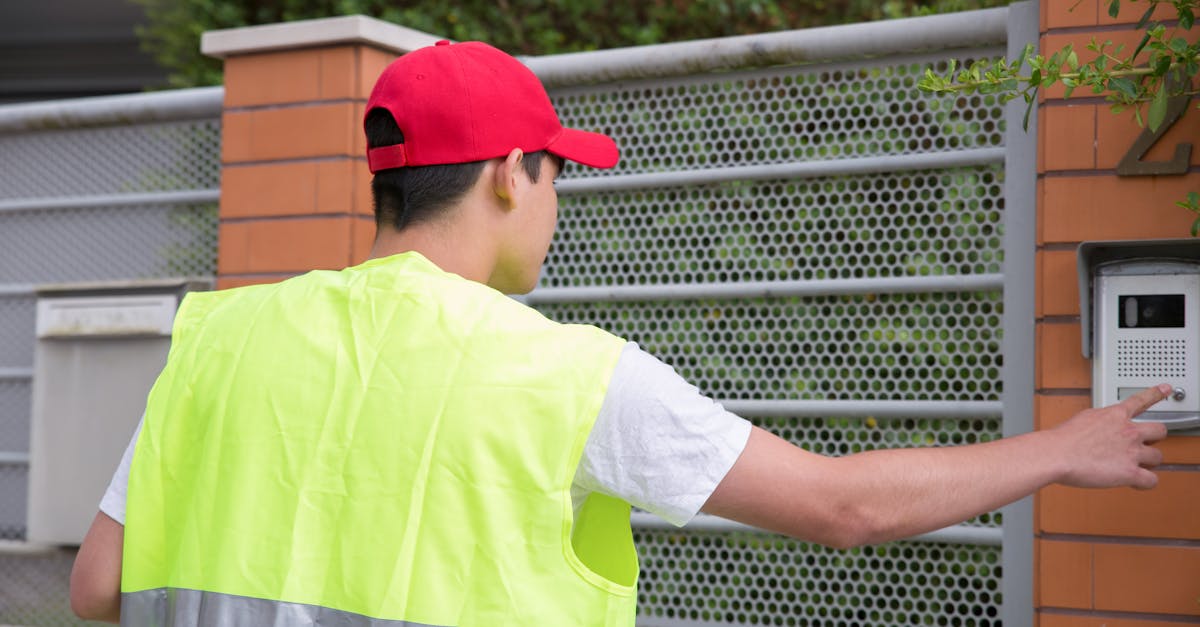Intercom Installation
In today’s fast-paced world, effective communication is paramount, especially in environments such as offices, schools, and large residential complexes. An intercom system serves as a vital tool for facilitating seamless communication among individuals, allowing for quick exchanges of information without the need for physical movement. The importance of effortless intercom installation cannot be overstated, as a well-installed system can significantly enhance operational efficiency and improve overall connectivity.
When intercom systems are installed with ease, users can focus on their tasks rather than grappling with technical difficulties or complicated setups. Moreover, a smooth installation process ensures that the intercom system functions optimally from the outset. This not only saves time but also reduces the likelihood of future malfunctions or the need for extensive repairs.
A reliable intercom system can foster a sense of community and collaboration, whether in a bustling office or a busy household. By prioritizing effortless installation, organizations and homeowners alike can create an environment where communication flows freely, ultimately leading to increased productivity and satisfaction.
Key Takeaways
- Effortless intercom installation is important for seamless communication within a space.
- Choosing the right intercom system is crucial for ensuring effective communication.
- Properly preparing the space for intercom installation is essential for a smooth process.
- Following a step-by-step guide can make intercom installation easier and more efficient.
- Troubleshooting common issues during intercom installation is necessary for maintaining seamless communication.
Choosing the Right Intercom System for Seamless Communication
Selecting the appropriate intercom system is crucial for ensuring that communication remains seamless and effective. With a plethora of options available on the market, it is essential to consider various factors before making a decision. First and foremost, assess the specific needs of your environment.
For instance, a large office may require a more robust system with multiple stations and features, while a small home might benefit from a simpler setup. Understanding the unique requirements of your space will guide you in choosing an intercom system that meets your needs without unnecessary complexity. Additionally, consider the technology behind the intercom systems available.
Traditional wired systems may offer reliability but can be cumbersome to install and maintain. On the other hand, wireless intercom systems provide flexibility and ease of installation, making them an attractive option for many users. Furthermore, modern intercom systems often come equipped with advanced features such as video capabilities, smartphone integration, and even smart home compatibility.
By evaluating these aspects carefully, you can select an intercom system that not only enhances communication but also integrates seamlessly with your existing technology.
Preparing Your Space for Intercom Installation

Before diving into the installation process, it is essential to prepare your space adequately. This preparation phase can significantly impact the efficiency of the installation and the overall performance of the intercom system. Start by mapping out the areas where you want to install intercom units.
Consider factors such as accessibility, visibility, and proximity to power sources. A well-thought-out layout will ensure that users can easily access the intercom units when needed. Next, take stock of any existing infrastructure that may affect the installation process.
For instance, if you are opting for a wired intercom system, check for any walls or barriers that may complicate running cables. In contrast, if you are choosing a wireless system, ensure that there are minimal obstructions that could interfere with signal strength. Additionally, gather all necessary tools and materials ahead of time to streamline the installation process.
By taking these preparatory steps, you can set the stage for a successful intercom installation that meets your communication needs.
Step-by-Step Guide to Effortless Intercom Installation
| Step | Description |
|---|---|
| 1 | Plan the intercom system layout |
| 2 | Choose the appropriate intercom model |
| 3 | Prepare the installation area |
| 4 | Mount the intercom unit |
| 5 | Connect the wiring and power source |
| 6 | Test the intercom system |
| 7 | Complete the installation and tidy up |
Once you have prepared your space and selected the right intercom system, it’s time to embark on the installation process. Begin by carefully reading the manufacturer’s instructions that accompany your chosen intercom system. These guidelines will provide valuable insights into specific requirements and best practices for installation.
Following these instructions closely will help ensure that you achieve optimal performance from your new system. Start with the main unit or control panel, which typically serves as the hub for communication. Mount it in a central location that is easily accessible to all users.
If you are installing a wired system, carefully run cables to each designated intercom unit location while avoiding sharp bends or kinks that could damage the wiring. For wireless systems, ensure that each unit is within range of the main unit to maintain strong connectivity. Once all units are installed and connected, conduct thorough testing to confirm that each unit functions correctly and that audio quality meets your expectations.
This step-by-step approach will help you achieve an effortless installation experience.
Troubleshooting Common Issues During Intercom Installation
Even with careful planning and execution, issues may arise during the installation of an intercom system. Being prepared to troubleshoot common problems can save time and frustration in the long run. One frequent issue is poor audio quality or static during communication.
This can often be attributed to improper wiring or interference from other electronic devices. If you encounter this problem, double-check all connections and ensure that cables are not running parallel to power lines or other sources of interference. Another common challenge is connectivity issues with wireless intercom systems.
If certain units are not receiving signals or are experiencing delays, it may be necessary to reposition them or adjust their placement to improve signal strength. Additionally, ensure that all units are charged or connected to power sources as needed. By being proactive in addressing these potential issues during installation, you can ensure that your intercom system operates smoothly from day one.
Integrating Intercom Systems with Other Communication Tools

In an increasingly interconnected world, integrating your intercom system with other communication tools can enhance its functionality and improve overall efficiency. Many modern intercom systems offer compatibility with smartphones, allowing users to receive notifications and communicate through their mobile devices. This integration can be particularly beneficial in environments where employees are frequently on the move or working remotely.
Furthermore, consider linking your intercom system with other smart home devices or office technologies. For instance, integrating your intercom with security cameras can provide real-time video feeds alongside audio communication, enhancing safety and awareness in your space. Additionally, connecting your intercom system to email or messaging platforms can streamline communication further by allowing users to send messages directly through their preferred channels.
By embracing these integrations, you can create a comprehensive communication ecosystem that meets the diverse needs of your environment.
Training Employees on Using the Intercom System for Seamless Communication
Once your intercom system is installed and integrated with other tools, it is essential to train employees on its use to maximize its potential benefits. Effective training ensures that all users are comfortable navigating the system and utilizing its features fully. Begin by organizing a training session where employees can familiarize themselves with the various functions of the intercom system, including making calls, adjusting volume levels, and using any additional features such as video capabilities.
Encourage employees to ask questions during training and provide hands-on practice opportunities to reinforce their learning. Additionally, consider creating user manuals or quick reference guides that employees can refer to as needed. By investing time in training employees on how to use the intercom system effectively, you can foster a culture of open communication and collaboration within your organization.
Maintaining and Upgrading Your Intercom System for Long-Term Efficiency
To ensure long-term efficiency and reliability of your intercom system, regular maintenance is essential. Schedule periodic checks to assess the functionality of each unit and address any issues promptly before they escalate into more significant problems. This may include cleaning units to remove dust or debris that could affect audio quality or checking connections for wear and tear.
As technology continues to evolve, consider upgrading your intercom system periodically to take advantage of new features and improvements. Many manufacturers release software updates that enhance performance or introduce new functionalities; staying informed about these updates can help you keep your system current and efficient. By prioritizing maintenance and upgrades, you can extend the lifespan of your intercom system while ensuring it continues to meet your communication needs effectively.
In conclusion, effortless intercom installation is a critical component of establishing effective communication in various environments. By understanding its importance, choosing the right system, preparing your space adequately, following a step-by-step installation guide, troubleshooting common issues, integrating with other tools, training users effectively, and maintaining the system over time, you can create a seamless communication experience that enhances productivity and fosters collaboration among users.
When considering the installation of an intercom system, it’s essential to also think about how it integrates with your overall security strategy. A related article that might be of interest is Choosing the Right Security Monitoring Service: What to Look For. This article provides valuable insights into selecting a security monitoring service that complements your intercom system, ensuring comprehensive protection for your property. By understanding the key features and services to look for, you can make informed decisions that enhance the effectiveness of your security measures.
Contact US
FAQs
What is an intercom system?
An intercom system is a two-way communication device that allows for audio and sometimes video communication between two or more locations. It is commonly used for security and convenience in residential and commercial buildings.
Why would I need an intercom system?
An intercom system can provide added security by allowing you to screen visitors before granting them access to your home or building. It can also provide convenience by allowing for easy communication between different areas of a building.
What are the different types of intercom systems?
There are several types of intercom systems, including wired intercoms, wireless intercoms, video intercoms, and telephone intercoms. Each type has its own set of features and benefits.
How do I install an intercom system?
The installation process for an intercom system will vary depending on the type of system you have chosen. It is recommended to follow the manufacturer’s instructions carefully or to hire a professional to ensure proper installation.
What are the benefits of installing an intercom system?
Some of the benefits of installing an intercom system include increased security, improved communication, and added convenience for residents or employees. It can also add value to a property.










